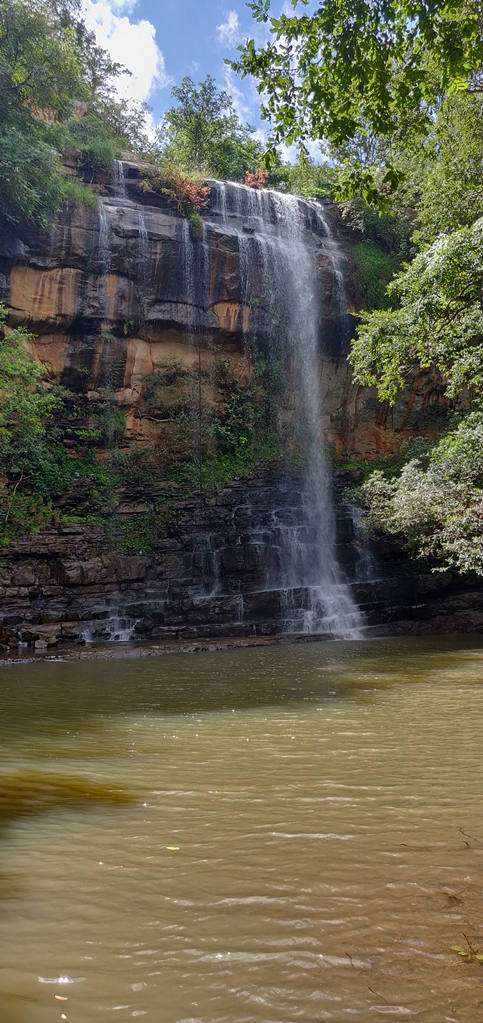Nallamala Hills in Andhra Pradesh with their thick forests, thundering waterfalls and wondrous nature are a perfect getaway for adventure and
wildlife buffs
BY SYED SAAD AHMED
Nothing prepared me for the spectacle at Farahabad viewpoint. The hour-long journey along a track winding through a luxuriant forest is pleasant, but unremarkable. So I was not expecting much at Farahabad until I reached the edge of a cliff. From the sheer drop below, the forest
extended unto the horizon. Amid the unending carpet of green… a lake shimmered.
The forest guide said one can sometimes see animals at the watering hole, though none seemed to be there then. But I couldn’t care less because the view had transfixed me. Only later did I notice a decrepit structure lording it over the cliff. The guide claimed it was a government resort that insurgents had blown up years earlier.
Farahabad (meaning place of joy) was once the summer resort and hunting grounds of Hyderabad’s Nizams. One can still see the ruins of the royals’ lodge on the road to the viewpoint. It is deep within the Nallamala Hills, a section of the Eastern Ghats that extends from Telangana to
Andhra Pradesh, and is now part of the Amrabad Tiger Reserve.

The reserve has 80 species of mammals and 300 kinds of birds, but only the giant flying squirrel made an appearance during my safari. Conspicuous with its colourful coat, the squirrel is so named as it can glide between trees. I saw it from one of the two watchtowers along the track to Farahabad, which also present views of the forest canopy and Nallamala’s undulating terrain.
Another gorgeous spot, especially at sunset, is the Octopus viewpoint. About 35 km from Farahabad, it overlooks the Srisailam Dam’s backwaters fringed by hills. The name derives from the various channels of the Krishna river snaking into valleys, supposedly resembling an octopus’s tentacles.
Nallamala has plenty of waterfalls, but the most accessible is Mallela Theertham. While the water flow varies depending on rainfall, it is a delightful spot in all seasons. One has to walk down steps carved into a hill to reach there. The water collects in a shallow pool ringed with verdure. It reputedly has medicinal properties, drawn from herbs as it flows through the forest. However, I am not sure if the short shower
I had underneath the falls was enough to imbibe these properties.
Among the many shrines in the hills, the Uma Maheshwaram temple is the easiest to visit. It is the northern gateway to the holy town of Srisailam. The temple is nestled in a cliff face, where impromptu waterfalls form when it rains. There are many minor shrines under overhangs
nearby.
The tourism department runs a guided trek from Mannanur to Uma Maheshwaram. Walking along hilly trails, rocky outcrops, and dry riverbeds provides an immersive experience of the forest landscape and flora. To promote community-based eco-tourism, the government employs guides from the Chenchu community, the region’s indigenous inhabitants.
Since Nallamala is an eco-sensitive zone, some of its attractions are accessible only at certain times. One can visit the Saleshwaram waterfall during an annual pilgrimage held for three days in April. The perennial waterfall drops from a height of 200 metres. Lodi Mallayya is a cave next to a pool hemmed in by craggy cliffs. One can go there on the auspicious day of Tholi Ekadashi in July.
@syedsaadahmed




